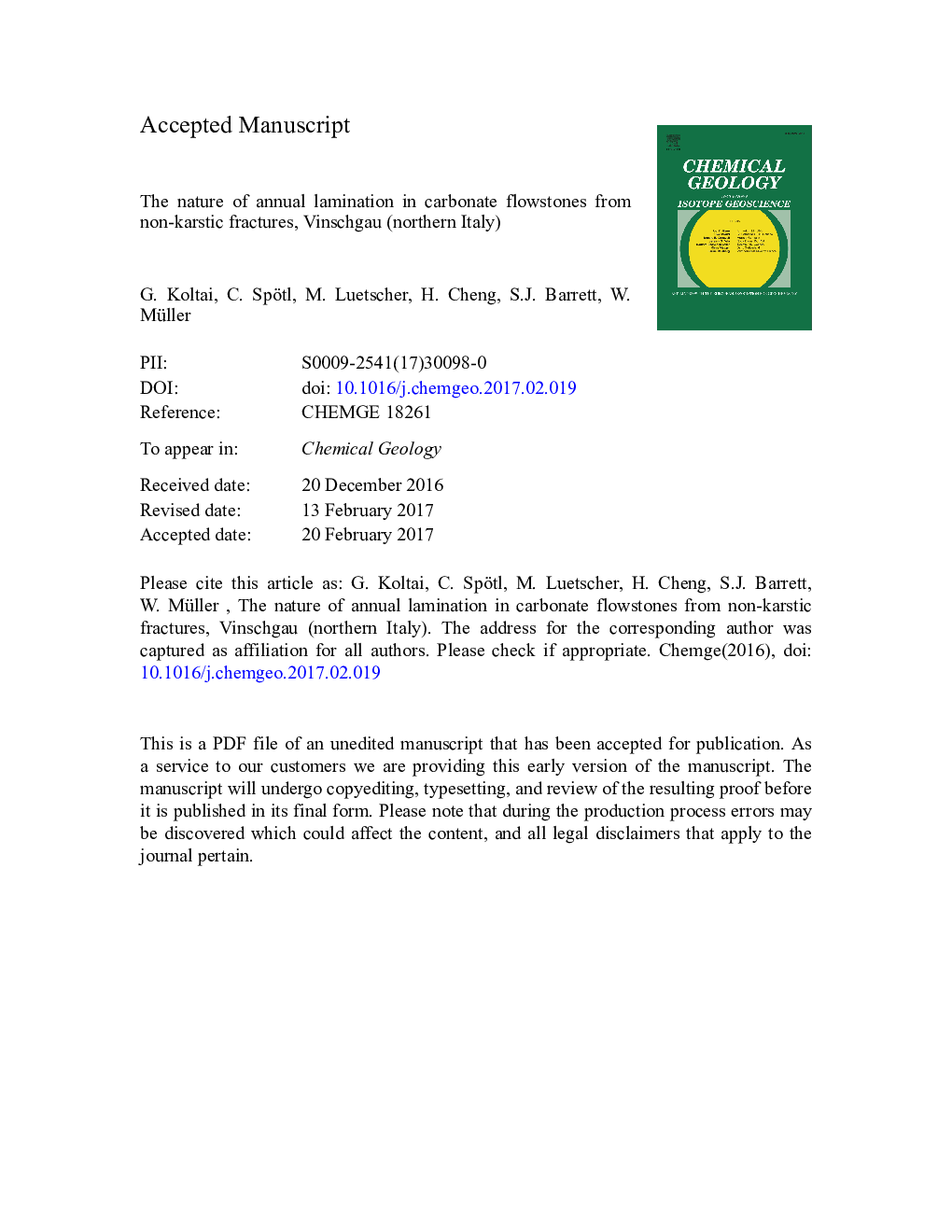| کد مقاله | کد نشریه | سال انتشار | مقاله انگلیسی | نسخه تمام متن |
|---|---|---|---|---|
| 5782633 | 1637517 | 2017 | 39 صفحه PDF | دانلود رایگان |
عنوان انگلیسی مقاله ISI
The nature of annual lamination in carbonate flowstones from non-karstic fractures, Vinschgau (northern Italy)
دانلود مقاله + سفارش ترجمه
دانلود مقاله ISI انگلیسی
رایگان برای ایرانیان
کلمات کلیدی
موضوعات مرتبط
مهندسی و علوم پایه
علوم زمین و سیارات
ژئوشیمی و پترولوژی
پیش نمایش صفحه اول مقاله

چکیده انگلیسی
The Vinschgau is an inneralpine valley in the Southern Alps, whose steep flanks are composed of strongly sheared gneisses and schists affected by deep-seated gravitational slope deformations. Fractures generated by these movements host a groundwater system characterised by high amounts of dissolved solids, which reflect long residence times and water-rock interactions driven by sulphide oxidation. This, in combination with high air and soil temperatures on the south-facing slope (Sonnenberg) of the valley favoured the deposition of calcite and aragonite flowstone in shallow parts of this fractured, non-karstic aquifer. About 5% of these speleothems exhibit well-developed regular lamination, whose annual origin was confirmed by radiometric dating. A stable isotope, petrographic and trace element study combined with U-Th dating was undertaken to disentangle the processes controlling lamina formation. A succession of darker and lighter laminae forms distinct macroscopic couplets (0.2-2 mm wide) in three of the samples, while one sample comprises alternating white and translucent laminae. Microscopically, the darker and white laminae show a higher abundance of opaque particles, whose organic origin is confirmed by their strong epifluorescence. The crystal fabric is dominated by the fascicular-optic type. The calcite shows regular δ18O oscillations with an amplitude of up to 1.2â°. With the exception of one sample, δ13C lacks such a regular pattern, and only shows smaller variations which do not correlate with δ18O in a consistent way. All samples exhibit regular, low-amplitude Mg, Sr, Ba and U cycles. In three samples Mg shows oscillations similar to the δ18O cycles in their frequency, but opposite in phasing. δ18O and Mg oscillations are primarily attributed to surface temperature variations that are transmitted to the shallow subsurface by thermal conduction. Low-amplitude trace element cycles (Mg, Sr, Ba and U) are most probably driven by intra-annual variations in the degree of prior aragonite precipitation in the seepage path which relates to seasonal changes in evaporation.
ناشر
Database: Elsevier - ScienceDirect (ساینس دایرکت)
Journal: Chemical Geology - Volume 457, 10 May 2017, Pages 1-14
Journal: Chemical Geology - Volume 457, 10 May 2017, Pages 1-14
نویسندگان
G. Koltai, C. Spötl, M. Luetscher, H. Cheng, S.J. Barrett, W. Müller,